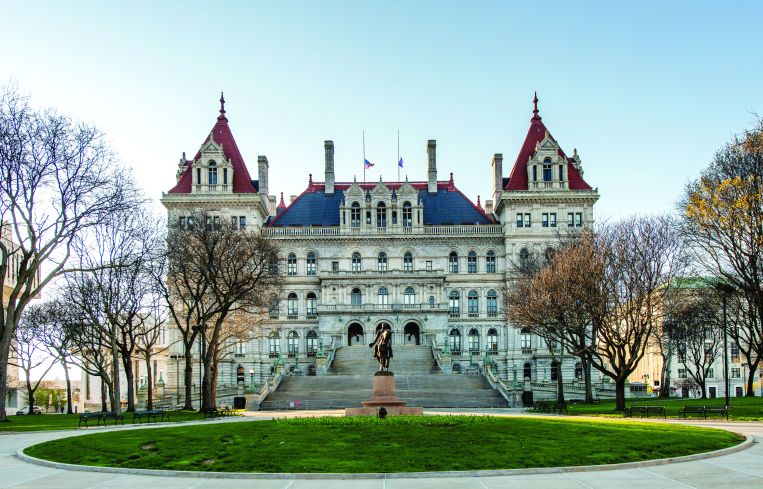What New York Lawmakers Can Do Now to Financially Aid Affordable Housing
By Jolie Milstein December 25, 2023 10:00 am
reprints
A financial crisis facing affordable and public housing threatens to upend the already uneasy housing safety net in New York. Affordable buildings across the state are at financial risk due to high rental arrears and skyrocketing insurance costs that were not accounted for in the original underwriting — which can put a property in the red and at risk of default. In fact, twice as many affordable projects are delinquent on their mortgages as in the past.
Such a crisis requires action. The good news is that there is a series of steps Albany can take in January to provide much-needed financial assistance to important properties, ensure those already in affordable or public units will see overdue capital improvements, and address inequities in the insurance system governing New York.

First, the state should appropriate $250 million for a rescue fund to save the affordable housing buildings at the highest risk of default, and $150 million to rehabilitate and preserve upstate public housing buildings. This applies the direct financial relief necessary to preserve affordability in our city’s affordable and public buildings. It is a straightforward investment solution for tenants and the industry, and will cut the burden of inflation and address long-standing arrears in buildings around New York.
While many buildings require direct capital investment to remain solvent, this is just a short-term fix. We also need to address the bigger picture issues that drive up costs across the state, including discrimination within the industry, the outdated Scaffold Law, and the insane slip-and-fall lawsuit industry.
Although it is illegal for landlords to discriminate against tenants who use rental assistance vouchers, those same safeguards do not apply to insurance companies. Insurance carriers frequently ask whether a building is affordable, and they often refuse to insure it on that basis. Even if they do ultimately approve the insurance, then a building is labeled as “high risk” and sees disproportionately high costs for coverage, increasing the operating costs associated with a property. Furthermore, insurance carriers use proprietary “crime scores” to refuse to cover whole neighborhoods.
This practice is discriminatory in two specific ways: It discriminates against the residents of affordable housing, and it also redlines entire neighborhoods. This discrimination also hikes up the cost of development and punishes the same neighborhoods and communities that experienced redlining for decades.
State bills S7298/A7910 would prohibit this practice in the insurance market and ease the financial burden on projects and developers in New York. This is a common-sense solution to an easily ignored problem.
Another priority on the legislature’s docket should be to reform the antiquated Scaffold Law — established in 1885 — which finds property owners and contractors 100 percent liable for any gravity-related injury on a job site, regardless of circumstance. This is unchecked: A laborer who suffers an injury as a result of their intoxication is not liable under this framework, and fraud is rampant. As such, it adds 10 percent to the costs of all construction work in New York City through higher insurance costs, with similar impacts across the state.
While safety on construction sites is of utmost priority, reform is needed to reduce the general terms of liability and update our standards for the 21st century, where safety protocols, government regulation and legal liability is much firmer than it was in the wake of the Civil War.
The liability standards also make it possible for individuals to take advantage of the legal system through outrageous slip-and-fall cases, such as when a drug dealer in the Bronx slipped on his own cocaine while running from the cops, and successfully sued the building owner for $175,000. With cases like this, no wonder premiums are through the roof.
Public and affordable housing are major public investments that make our state a more accessible and equitable place to live. Unfortunately, many of these investments are now at risk of financial insolvency. The small changes outlined above can shore up the finances of affordable and public housing developments. They are exactly the kind of steps the legislature should be taking to avoid another failed session on housing, and exactly the reform and investment needed to support New Yorkers across the state.
Jolie Milstein is president and CEO of The New York State Association for Affordable Housing.


